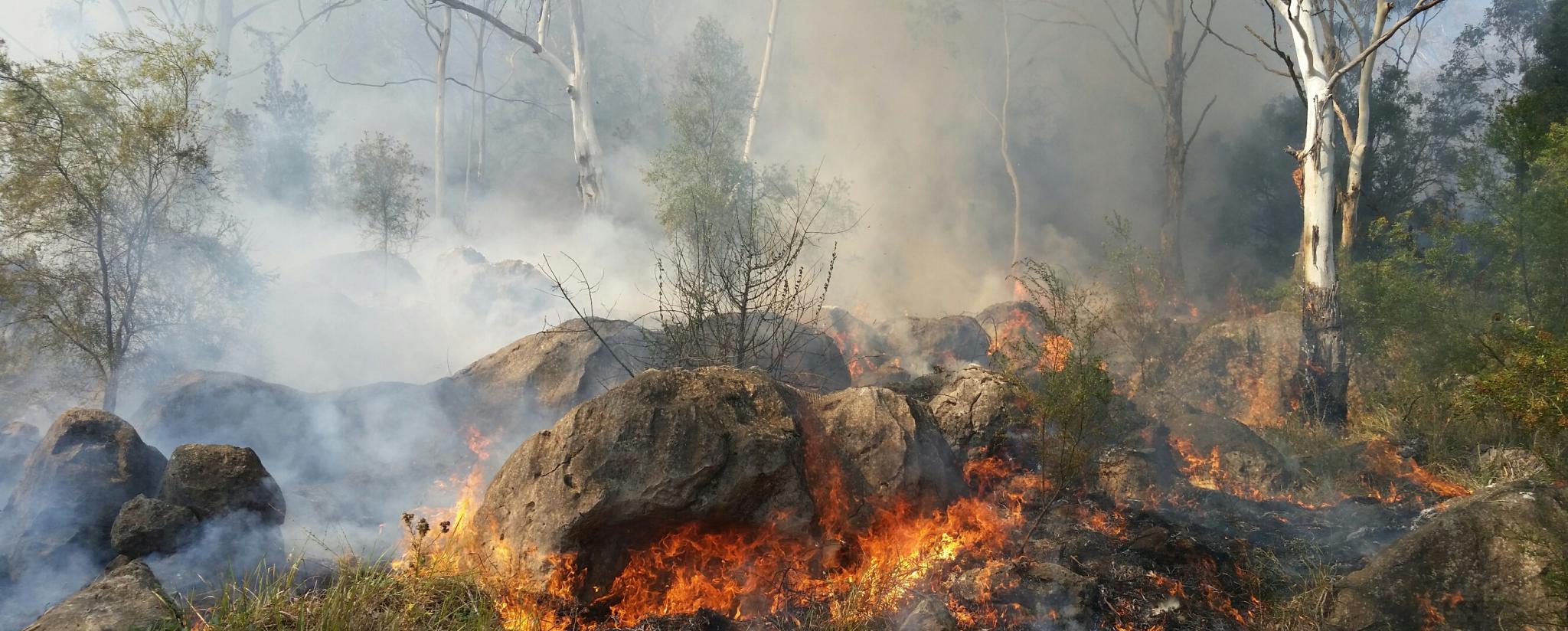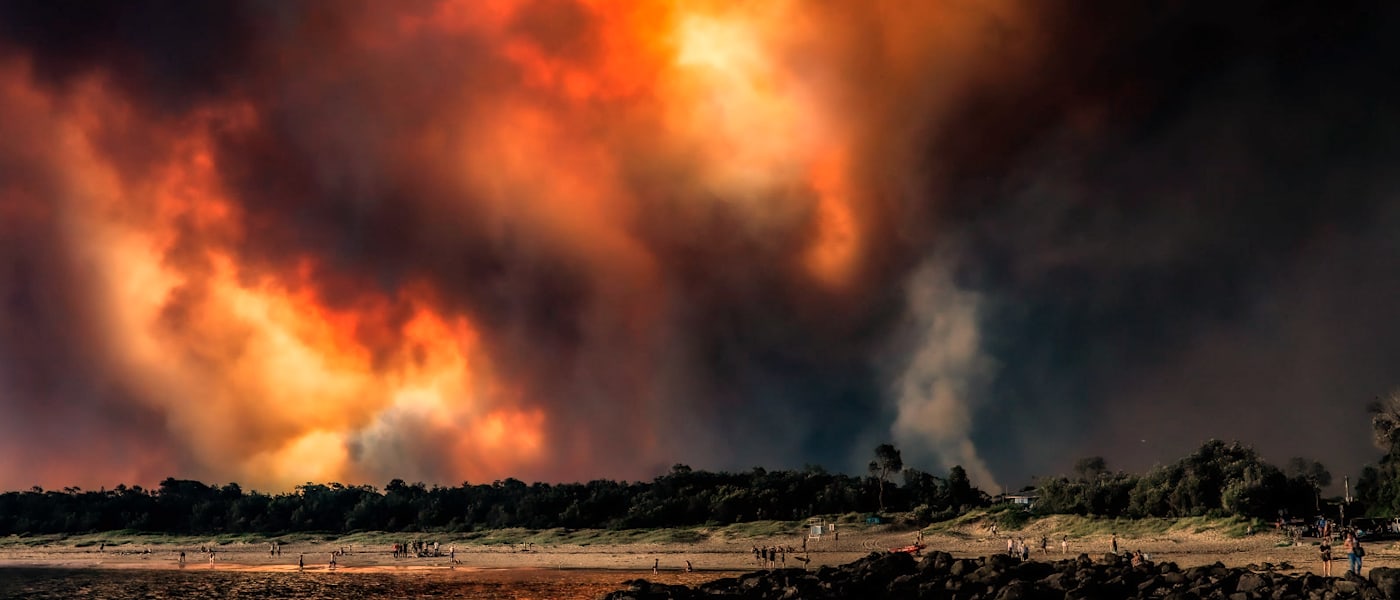Strategizing for Security: Developing a Reliable Bushfire Management Plan
Wiki Article
Important Tips for Bushfire Monitoring to Make Certain Fire Security

Comprehending Bushfire Threat Levels
Understanding the differing levels of bushfire threat is essential for reliable planning and preparation in mitigating potential hazards to lives and buildings. Bushfire risk levels are generally classified based on aspects such as weather, gas accessibility, topography, and historical fire actions. By comprehending these threat communities, people and degrees can proactively execute approaches to minimize susceptability and improve strength in the face of possible bushfire events.The first level of bushfire threat is reduced danger, where the chance of a bushfire occurring and triggering significant damage is minimal. This level frequently takes place throughout periods of low temperatures, modest humidity, and marginal wind rates. Moderate danger degrees indicate a raised potential for bushfires because of escalating climate conditions or fuel schedule. Risky levels indicate a substantial risk, with conditions favorable to fast fire spread and severe fire actions. Severe risk degrees are one of the most crucial, posturing imminent risk to lives and homes as a result of serious weather and very combustible gas.
Understanding these bushfire risk degrees allows stakeholders to tailor their preparedness and action activities appropriately, making sure a efficient and proactive approach to bushfire monitoring.
Establishing a Defensible Room
Reliable bushfire administration begins with developing a defensible room around properties to boost security versus potential fire risks. A defensible space is a barrier zone that develops a barrier between a framework and the bordering flammable plant life. This area works as an important line of protection, giving firemans a safe area to run and helping to lower the threat of a fire spreading out to the property.When establishing a defensible space, it is important to consider the layout of the building and the surrounding landscape. Clearing greenery, specifically highly flammable plants, within a particular distance of the residential property can help stop the quick spread of fires. In addition, preserving a well-irrigated area around the home can better boost its defensibility.
Routine upkeep of the defensible room is important to guarantee its efficiency. This includes trimming overhanging branches, removing dead greenery, and maintaining the location totally free of particles. By investing effort and time into establishing and keeping a defensible room, home proprietors can considerably enhance their opportunities of securing their homes and assets during a bushfire.
Executing Fire-Resistant Landscaping
When designing landscapes to minimize the risk of bushfires, integrating fire-resistant components is crucial for enhancing residential or commercial property protection and lowering fire threats. Select plants with high wetness content, reduced oil material, and minimal dead plants to decrease the risk of fire spread.
Creating an Emergency Discharge Strategy
Establishing a comprehensive emergency discharge plan is essential for making sure the security and health of individuals during prospective bushfire events (BAL Report). An effective emptying plan need to describe clear treatments to follow in the occasion of a bushfire threat, including marked emptying courses, setting up points, and communication methodsTo begin producing an emergency situation discharge plan, it is important to analyze the specific risks and susceptabilities of your location. Determine numerous discharge routes that result in risk-free areas away from the fire, thinking about aspects such as surface, road access, and possible hazards. Establish communication channels to sharp homeowners of an upcoming evacuation, utilizing techniques such as alarms, message signals, or door-to-door alerts.
Consistently evaluation and practice the evacuation plan with all residents or community participants to ensure everyone comprehends their roles and duties. Conduct drills to check the efficiency of the strategy and make any type of essential adjustments. By having a well-prepared discharge strategy in position, you can improve the possibilities of a risk-free and orderly emptying throughout a bushfire emergency situation.
Preserving Fire Security Equipment
After developing an extensive emergency discharge prepare for bushfire events, it is vital to focus on the regular upkeep of fire security equipment to make sure optimum Discover More performance and readiness. Routine upkeep of fire safety and security devices such as fire extinguishers, smoke detectors, fire alarm systems, and lawn sprinkler is critical in safeguarding lives and building during a bushfire. Performing routine inspections, screening, and servicing of these tools by certified professionals is important to guarantee they remain in functioning order when required.Fire extinguishers must be inspected on a regular basis for pressure degrees, visible damage, and appropriate capability. By vigilantly maintaining fire safety and security tools, resource individuals can boost their preparedness and action abilities in the occasion of a bushfire.
Conclusion
To conclude, efficient bushfire administration involves comprehending danger degrees, producing defensible rooms, carrying out fire-resistant landscaping, establishing evacuation plans, and preserving fire safety and security devices. By following these important suggestions, people can guarantee better fire defense and security for their properties and communities. It is essential to focus on proactive procedures to minimize the risks associated with bushfires and to be planned for emergencies.By comprehending the subtleties of bushfire risk degrees, creating defensible rooms, implementing fire-resistant landscape design, creating detailed evacuation plans, and guaranteeing the maintenance of fire security devices, areas and people can considerably reinforce their resilience versus the devastations of wildfires - Bushfire Risk. These tips are not just critical for protecting versus prompt fire hazards however likewise for fostering long-term fire protection techniques that can make a considerable difference in the face of rising bushfire hazards
High-risk levels indicate a considerable hazard, with conditions helpful to quick fire spread and severe fire behavior. Routine upkeep of fire safety devices such as fire extinguishers, smoke detectors, fire alarm systems, and lawn sprinkler systems is crucial in securing lives and check it out residential or commercial property throughout a bushfire.In final thought, effective bushfire administration entails comprehending risk levels, producing defensible rooms, carrying out fireproof landscape design, developing evacuation plans, and keeping fire safety devices.
Report this wiki page